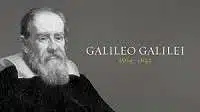
GALILEO GALILEE
Read the following passage and answer the following questions:-
Galileo Galilee often known as Galileo was an Italian physicist, mathematician, engineer, astronomer and philosopher who played a major role in the scientific revolution. His achievements include improvements in the telescope and consequent astronomical observations and support for Copernicanism. Galileo has been called the “father of modern observational astronomy” the “father of modern physics”, the “father of science” and “the father of modern science.
His contributions to observational astronomy include the telescopic confirmation of the phases of Venus, the discovery of the four largest satellites of Jupiter (named the Galilean moons in his honour), and the observation and analysis of sunspots. Galileo also worked on applied science and technology, inventing an improved the military compass and other instruments.
In the Catholic world prior to Galileo’s conflict with the Church, the majority of educated people subscribed to the Aristotelian geocentric view that the earth was the centre of the universe and that all heavenly bodies revolved around the Earth.
Indeed, to the casual observer, it seemed common sense that since the sun ‘rose’ in the morning and ‘set’ at night, it must have circled around the earth. Ancient authorities like Aristotle and the Roman astronomer Ptolemy had championed this viewpoint, and the notion was also supported by the Catholic Church, which placed mankind, God’s principal creation, at the centre of the cosmos. Yet, the Ptolemaic theory was soon under attack.
Nicholas Copernicus, a Polish astronomer, openly sectioned the Ptolemaic system and proposed a heliocentric system in which the planets including earth orbited the sun (Helios). This more mathematically satisfying way of arranging the solar system did not attract many supporters at first since the available data did not yet support a wholesale abandonment of Ptolemy’s system. By the end of the 16th century, however, astronomers like Johannes Kepler (1571-1630) had also begun to embrace Copernicus’ theory.
(a) Conservative astronomers of Galileo’s time held that the earth ———-
(b) The most important champion of the theory of geocentricity was ————
(c) According to the heliocentric theory proposed by Copernicus, the earth ————
(d) Before Galileo, most educated people believed in ———–
(e) The word closest in meaning to withdraw one’s support or help from’ is———–
(f) Working on applied sciences, Galileo invented ————
(g) Copernicus was a——— astronomer.
(h) By the end of the 16th century ———-accepted the Copernicus’ theory.
Answers :
(a) was the centre of the universe and that all heavenly bodies revolved around it
(b) the Roman astronomer Ptolemy
(c) orbited the sun (Helios)
(d) Aristotelian geocentric view
(e) ‘abandonment’
(f) the four largest satellites of Jupiter (named the Galilean moons in his honour)
(g) polish
(h) astronomers like Johannes Kepler
Download the above Passage in PDF
More Comprehension Passages:-
Passage – 101 Tourism (300 Words Subjective/Objective Unsolved)
Passage- 102 Nepotism (250 Words Objective Solved)
Passage- 103 Gratuitous Advice (250 Words Objective Solved)
Passage-104 THE TRADITION OF PAINTING (300 Words Subjective Solved)
Passage-105 ORANGUTANS (300 Words Subjective Solved)
Passage-106 SPARROW (300 Words Subjective/Objective Solved)
Passage-107 GALILEO GALILEE (300 Words Subjective Solved)
Passage-108 NOTHING WRONG WITH AYURVEDIC DRUGS (300 Words Objective Solved)
Passage-109 Traunts Progress (250 Words Objective Solved)
Passage-110 Culinary Art (300 Words Subjective Unsolved)
This passage is all about culinary arts stating the culinary arts meaning.